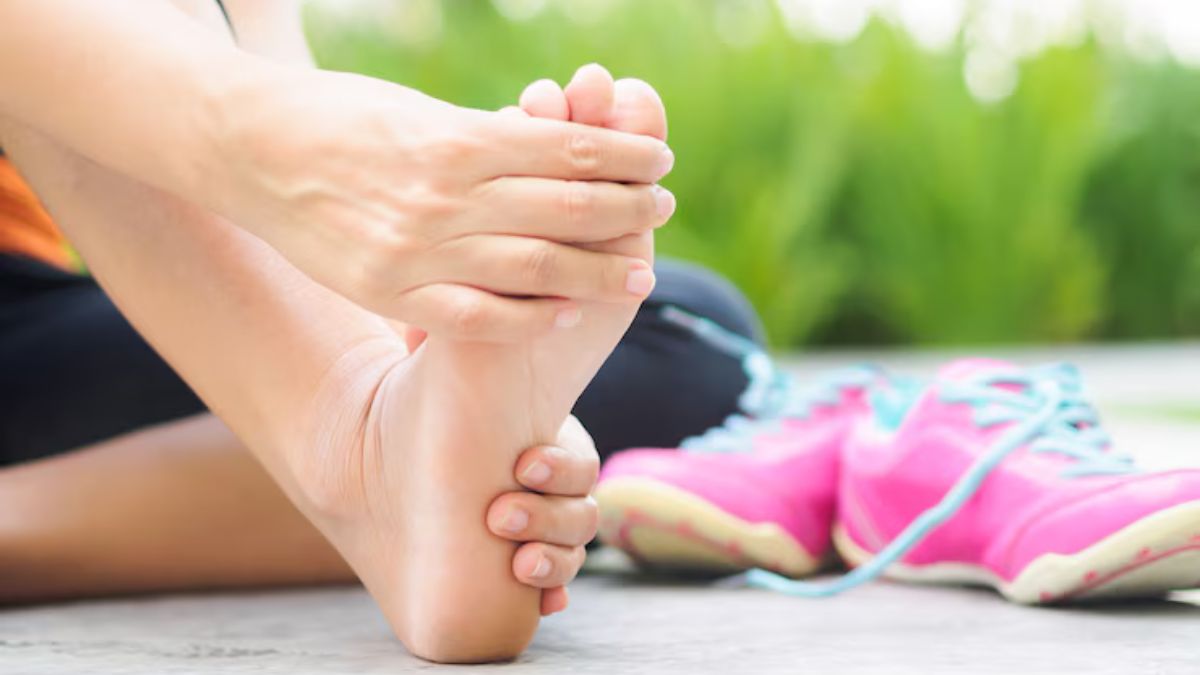Health
Understanding Setriasona: A Comprehensive Guide

There is hope for the treatment of a number of mental health issues using the pharmacological substance setriasona, which is attracting interest in the medical community. Let’s take a closer look at this drug and learn more about it: how it works, what it contains, potential side effects, recommended dose, and more.
Chemical Structure
Setriasona is a bicyclic molecule with a trifluoromethyl group that is distinctive in its chemical structure; it is an inhibitor of serotonin reuptake (SRI). This structure is essential to its pharmacological function because it affects its interaction with brain serotonin transporters.
Mechanism of Action
When taken orally, setriasona blocks the reuptake of serotonin, a neurotransmitter that controls behavior, emotions, and mood. Setriasona improves the availability of serotonin in the synaptic cleft by inhibiting its reabsorption into neurons. This prolongs the effects of serotonin and makes it more effective in stabilizing mood and reducing anxiety.
Medical Uses
Many anxiety disorders, including GAD, panic disorder, social anxiety disorder, and OCD, find widespread use in the treatment of setriasona. Depression symptoms, including chronic melancholy, lack of interest, and exhaustion, can be alleviated with its use in medication treatment.
Treatment of Anxiety Disorders
Setriasona provides a glimmer of hope for people who are suffering from crippling anxiety symptoms. Its calming effects are due to its capacity to alter brain serotonin levels, which in turn reduce anxiety, uneasiness, and excessive worrying.
Management of Depression
The common mental illness known as depression has a devastating effect on people’s daily lives. Setriasona helps restore chemical equilibrium in the brain, alleviates depressive symptoms, and promotes emotional well-being through its effects on serotonin.
Potential for Insomnia Treatment
Many people experience anxiety and sadness during insomnia, which is defined as trouble going to sleep or remaining asleep. For those who suffer from sleep disruptions, setriasona may help enhance the quality of their sleep because of its anxiolytic and mood-regulating effects.
Side Effects and Risks
There are certain side effects associated with setriasona, notwithstanding its therapeutic claims. Nausea, vertigo, headaches, and gastrointestinal problems are common adverse effects. Serotonin syndrome or thoughts of suicide are among the severe side effects that might happen and require emergency medical treatment.
Dosage and Administration Guidelines
The dosage of Setriasona is tailored to each patient based on their unique ailment, age, and reaction to the medicine. Oral administration is the norm, with the prescribing healthcare provider guiding dose frequency and titration to maximize therapeutic results with minimal side effects.
Interactions with Other Medications
Some drugs, such as antibiotics, monoamine oxidase inhibitors (MAOIs), and selective serotonin reuptake inhibitors (SSRIs), may interact with setriasona, which might cause side effects or reduce the effectiveness of the medication. To reduce the likelihood of adverse drug reactions, it is critical to inform your healthcare practitioner about all the drugs, vitamins, and herbal medicines you are currently using.
Safety Precautions and Warnings
It is important for healthcare practitioners to thoroughly review the patient’s medical history, including any previous mental health issues, allergies, and drugs, before starting Setriasona therapy. People with weakened liver or kidney function, as well as those who are pregnant or nursing, require extra care.
Research and Development of Setriasona
The development of Setriasona is a prime example of psychopharmacology’s efforts to find fresh and more effective treatments for mental health conditions. Further investigation is needed to clarify its safety profile, long-term effectiveness, and possible uses in other patient groups.
Comparative Analysis with Other Similar Medications
Setriasona has a similar effectiveness to other serotonin reuptake inhibitors in reducing depressive and anxious symptoms, but it has a more favorable side effect profile for certain people. However, different people may have different reactions to medicine; therefore, tailored treatments are needed.
Patient Experiences and Reviews
The real-life experiences of people receiving Setriasona treatment can be better understood through anecdotal evidence and testimonials from patients. Some people say it really lifts their spirits and makes them feel better overall, while others have problems with how well it works or how tolerable it is. If you want your concerns addressed and your treatment results optimized, it is crucial that you communicate openly with your healthcare professionals.
Setriasona: Future Prospects and Innovations
There is hope for Setriasona’s future in the shape of improved formulation, delivery methods, and therapeutic uses as our knowledge of neurobiology and mental health issues grows. Collaboration between healthcare professionals, academia, and industry will be the driving force behind improvements in psychiatric pharmacology. Patients all around the world will benefit from these breakthroughs.
Conclusion
For those struggling with anxiety, sadness, and associated mood disorders, setriasona is a powerful new tool in the arsenal of psychotropic drugs. The therapeutic advantages are clear, but in order to get the best results for patients, it’s important to think about the dose, safety measures, and hazards.
FAQs
Is Setriasona addictive?
No one has reported an addiction to Setriasona. Nevertheless, withdrawal symptoms might occur with a sudden stop of the medicine, therefore it’s best to gradually reduce the dosage under a doctor’s supervision.
How long does it take for Setriasona to start working?
Setria’sona usually starts working between 1 and 4 weeks after starting treatment; however, this might vary from person to person. Even if you don’t feel better right away, you must keep taking the prescription regularly as directed.
Can Setriasona be taken with food?
It is not necessary to eat before taking Setria’sona. Having said that, some people find that taking the medicine with food helps alleviate stomach issues.
What should I do if I miss a dose of Setriasona?
Take a double dosage of Setria’sona at the first sign of forgetfulness. Do not take a double dosage to make up for a missed dose; instead, continue with your usual dosing regimen. To make up for a missing dose, do not take two pills at once.
Are there any lifestyle changes recommended while taking Setriasona?
To enhance the therapeutic effects of Setria’sona, it is recommended to include good lifestyle practices into your routine. This includes getting enough sleep, exercising regularly, and learning to handle stress. Also, to avoid any negative interactions or side effects, it’s best to stay away from alcohol and illegal drugs.
Health
Are Nutri Grain Bars Healthy? A Comprehensive Look at Their Nutritional Value and Health Impact

Many people go for are Nutri Grain Bars healthy as a snack since they are handy and healthy. Is their healthiness really a question? In order to grasp their actual dietary worth, we must examine their nutritional composition meticulously.
History of Are Nutri-Grain Bars Healthy
In the early 1990s, Kellogg’s introduced Nutri-Grain Bars, marketing them as a healthy and convenient alternative to traditional breakfast foods. People of all ages love them since they’ve come in so many different tastes and formulas.
Nutritional Breakdown
Each Nutri-Grain Bar typically contains:
Calories: 120-140
Total Fat: 3 grams
Carbohydrates: 25-30 grams
Sugars: 12-14 grams
Protein: 1-2 grams
Fiber: 1-2 grams
Oats made from whole grains, flour with added nutrients, fruit fillings, and sugar or corn syrup are the major components.
Health Benefits
Convenient Energy Source
Because of their high carbohydrate content, are Nutri Grain Bars are healthy great for satisfying hunger in the middle of the morning or providing energy before exercise.
Vitamins and Minerals
You may complement your diet with these bars since they are generally packed with minerals and vitamins.
Potential Drawbacks
High Sugar Content
Each bar has 12–14 grams of sugar, which is one of the main concerns. Consumption on a regular basis might cause an excess of sugar.
Processed Ingredients
For those who want their meals raw, Nutri-Grain Bars may not be the best option due to the processed components they include, such as high-fructose corn syrup and artificial flavors.
Comparison with Other Snack Bars
Nutri-Grain vs. Granola Bars
While the nuts and seeds in granola bars make them higher in fiber, they are also known to have a lot of sugar and fat. An option that is more balanced, while sweeter, is Nutri-Grain Bars.
Nutri-Grain vs.Are nutri grain bars Healthy
Because of their high protein content, protein bars are ideal for refueling after exercise. On the other hand, they might have a higher sugar and artificial additive content.
Role in a Balanced Diet
Serving Sizes
When eaten moderately, one Nutri-Grain bar may contribute to a healthy diet. To make it a more filling snack, try adding some nuts or cheese on top.
Complementary Foods
Nutri-Grain Bars, like other whole foods like fruits, veggies, lean meats, and grains, should be part of a balanced diet.
Impact on Weight Management
Calories and Weight Gain
Calories range from 120 to 140 per bar. Although not too high, consuming a number of bars may accumulate and, if not countered with exercise, might result in weight gain.
Weight Loss Plans
If you’re trying to lose weight, Nutri-Grain Bars are a great addition to your diet as an energy boost or treat every now and then, but they shouldn’t take the place of healthier options.
Suitability for Different Diets
Vegetarian and Vegan Options
For vegetarians, the majority of are Nutri Grain Bars healthy are a good option. However, those who follow a vegan diet should avoid goods that include honey or certain vitamins that come from animals.
Gluten-Free and Allergy Considerations
Because they contain gluten, Nutri-Grain Bars are not suited for those who have celiac disease or a gluten sensitivity. People who are already sensitive to foods like dairy or soy should also be on the lookout for these allergens.
Marketing vs. Reality
Health Claims
As far as morning foods go, Nutri-Grain Bars are touted as being nutritious. Even while they have some healthy grains and vitamins added to them, the processed components and high sugar level can make them less beneficial.
Actual Nutritional Value
In terms of health benefits, are Nutri Grain Bars healthy are more akin to sugary snacks when one examines the nutrition facts. They shouldn’t be counted on as a main source of nutrients, but rather enjoyed in moderation.
Consumer Reviews and Opinions
General Feedback
Many people love Nutri-Grain Bars because they are tasty and convenient. They say they are easy to carry about and eat even when they’re busy.
Expert Opinions
The sugar and processed elements in are nutri grain bars healthy make nutritionists warn against relying on them too much and instead suggest eating full, unprocessed meals.
Homemade Alternatives
Healthier Recipes
You can manage the ingredients when you make your own are nutri grain bars healthy at home. Oats, whole wheat flour, honey, maple syrup, or dried fruits are some of the basic ingredients that could be used in a recipe.
Benefits of Homemade Bars
You may customize homemade bars to fit your diet by lowering the sugar amount and removing any ingredients you don’t want. In order to make a healthier snack, they may also include additional protein and fiber.
Tips for Choosing Healthier Options
Reading Labels
Check the snack bar’s sugar level, fiber content, and percentage of whole foods before buying it. If a bar has artificial ingredients or high-fructose corn syrup, go away.
Recommended Brands
Some snack bar brands that use less processed, more natural ingredients include KIND, Larabar, and RXBAR. Peanut butter, apple cinnamon, and other similar tastes are very popular.
Conclusion
When eaten in moderation, are nutri grain bars healthy are both delicious and easy to include into a healthy diet. But you shouldn’t rely on them as your main source of nourishment because of the high sugar content and processed additives. If you’re watching what you eat, you may want to try making your own bars at home or buying brands that use less complicated components.
FAQs
Are Nutri-Grain Bars good for kids?
Yes, when used moderately. Kids may like them as a quick snack, but they should also eat other meals that are rich in nutrients.
Can Nutri-Grain Bars replace a meal?
Not perfect. Despite their energy-boosting potential, they can’t compare to a complete meal in terms of nutrition.
How often can I eat Nutri-Grain Bars?
The sugar level makes them unhealthy if consumed on a regular basis, although eating them every now and again is alright.
Are there any harmful additives in Nutri-Grain Bars?
Some people may want to stay away from them because of the processed substances they contain, such as high-fructose corn syrup. Before making a purchase, read the ingredient list.
What’s the best time to eat a Nutri-Grain Bar?
These are perfect for a pre-workout energy boost or a snack in the middle of the morning. For optimal fullness and health, eat them with a protein source.
Health
The Incredible Benefits of Brazil Nuts Astaxanthin: A Nutritional Powerhouse

Are you looking for superfoods that not only boost your health but are packed with nutritional goodness? Look no further than brazil nuts astaxanthin. These two natural wonders are gaining widespread recognition for their incredible health benefits. Whether you’re a wellness enthusiast or someone looking to improve overall health, adding Brazil nuts and astaxanthin to your diet could be a game-changer.
But why are they so special? In this article, we’ll take a deep dive into what makes Brazil nuts and astaxanthin so unique, their nutritional profiles, and how they can benefit your health. Let’s explore how this dynamic duo can supercharge your wellness routine!
What Are Brazil Nuts?
Brazil nuts come from the Amazon rainforest and are harvested from the Brazil nut tree (Bertholletia excelsa). Native to South America, these large, crescent-shaped nuts are not only delicious but incredibly nutritious.
They’re often lauded as one of the richest food sources of selenium, a trace mineral that plays an important role in various bodily functions.
Nutritional Benefits of Brazil Nuts
So, what makes Brazil nuts such a powerful snack? They’re loaded with:
- Selenium: Brazil nuts are known for their high selenium content. Just one or two nuts a day can give you your daily recommended dose!
- Healthy fats: They contain heart-healthy fats that can improve cholesterol levels.
- Fiber: A good source of dietary fiber, Brazil nuts help with digestion and gut health.
- Vitamins and minerals: Rich in magnesium, zinc, and vitamin E, they support bone health, immune function, and skin health.
Selenium and Its Role in the Body
Selenium is a critical antioxidant that helps protect cells from oxidative damage. It plays a role in thyroid function, immune response, and even in reproduction. Since it’s not naturally produced in the body, we rely on dietary sources like Brazil nuts to meet our selenium needs.
FOR MORE VISIT: BLOGGINGTIMES.ORG
What Is Astaxanthin?
Astaxanthin is a powerful carotenoid pigment, commonly found in algae and seafood like salmon, shrimp, and krill. Often referred to as the “king of antioxidants,” astaxanthin’s bright red color is responsible for the vibrant hues of these marine creatures.
It’s considered one of the strongest antioxidants in nature and offers a variety of health benefits.
The Antioxidant Power of brazil nuts astaxanthin
Astaxanthin neutralizes free radicals, preventing oxidative stress that can lead to chronic diseases like cancer and cardiovascular problems. In addition, it has been studied for its anti-inflammatory properties and ability to boost overall immunity.
Astaxanthin for Skin Health
One of the standout benefits of astaxanthin is its effect on skin health. Research shows it helps protect the skin from UV damage, reduces the appearance of wrinkles, and promotes elasticity and moisture. This makes it a popular ingredient in many skincare supplements.
Astaxanthin for Eye Health
Astaxanthin also does wonders for your eyes. It has been shown to reduce eye strain, protect against vision loss, and even help in preventing age-related macular degeneration (AMD), which can affect vision as we age.
The Synergy Between Brazil brazil nuts astaxanthin
When combined, Brazil nuts and astaxanthin can create a nutritional powerhouse, especially due to their antioxidant-rich profiles. While Brazil nuts provide selenium, astaxanthin adds its own unique set of anti-inflammatory and antioxidant properties. Together, they can support everything from heart health to immunity.
How to Incorporate Brazil Nuts and Astaxanthin into Your Diet
If you’re excited to start reaping the benefits of Brazil nuts and astaxanthin, here are some simple ways to add them to your diet.
Creative Ways to Add brazil nuts astaxanthin to Your Diet
- Eat them as a snack: Just a couple of Brazil nuts per day are enough to meet your selenium needs.
- Add them to smoothies: Throw a handful into your favorite smoothie for a nutty flavor and extra nutrients.
- Mix them into salads or oatmeal: Chopped Brazil nuts can add texture and a nutritional boost to your meals.
Best Forms of Astaxanthin Supplementation
Astaxanthin is available as a supplement in capsule form. It’s also present in foods like wild-caught salmon and other seafood. If you prefer supplements, look for one with high-quality astaxanthin extracted from Haematococcus pluvialis algae.
Who Can Benefit from Brazil Nuts and Astaxanthin?
- Athletes: For enhanced recovery and reduced inflammation.
- Aging adults: To support skin and eye health.
- Those with inflammatory conditions: To manage chronic inflammation and oxidative stress.
Potential Side Effects and Precautions
While brazil nuts astaxanthin are incredibly nutritious, eating too many can lead to selenium toxicity, which can cause symptoms like hair loss, digestive issues, and even fatigue. Stick to a serving size of 1-2 nuts per day.
As for astaxanthin, it is generally considered safe, but it’s always a good idea to consult with a healthcare professional before adding any new supplement to your routine.
Conclusion
Brazil nuts astaxanthin are two of nature’s most potent sources of nutrients and antioxidants. Whether you’re aiming to boost your immune system, improve skin health, or protect your heart, this powerhouse duo can be a valuable addition to your daily wellness routine.
FAQs
- Can I eat brazil nuts astaxanthin every day?
Yes, but limit your intake to 1-2 nuts per day to avoid selenium toxicity. - Is astaxanthin safe for long-term use?
Yes, studies show that astaxanthin is safe for long-term use when taken at the recommended dosage. - Can astaxanthin help with joint pain?
Astaxanthin has anti-inflammatory properties, which may help reduce joint pain and stiffness. - What’s the best way to store Brazil nuts?
Store them in an airtight container in the refrigerator to keep them fresh longer. - Are there any vegan sources of astaxanthin?
Yes, the primary source of brazil nuts astaxanthin used in supplements comes from the algae Haematococcus pluvialis, which is vegan-friendly.
Health
Esfeet: Causes, Symptoms, Diagnosis, Treatment, Prevention

Maintaining healthy feet is essential to good health in general. Despite its significance, the majority of us frequently ignore this bodily component. When we have foot difficulties, it may really affect how we move around and how happy we are. Esfeet is only one of several conditions that affect people all around the world.
Understanding Foot Health
A multitude of connective tissues, including bones, muscles, ligaments, and tendons, make up the intricate foot. It allows us to move about, keeps us balanced, and supports our weight. Foot problems such as corns, calluses, bunions, and ingrown toenails are common, despite the foot’s significance.
What is Esfeet?
Conditions that cause pain and discomfort in the feet are collectively referred to as esfeet or foot pain syndrome. A variety of areas of the foot are susceptible, such as the sole, arch, toes, and heel. Esfeet can develop for a variety of reasons, including wearing the wrong shoes, being on your feet too much, trauma, or preexisting diseases like diabetes or arthritis.
Symptoms of Esfeet
Constant discomfort, soreness, redness, swelling, and trouble walking or standing for extended periods are some of the symptoms that individuals with esfeet may have. The underlying reason and individual circumstances might determine the intensity of symptoms.
Diagnosing Esfeet
A complete medical history and evaluation of symptoms are standard components of a comprehensive physical examination for diagnosing Esfeet. Also, in order to check for injuries or anomalies, doctors may suggest imaging tests like X-rays, MRIs, or CT scans of the foot.
Treatment Options
In order to treat Esfeet, one must first focus on reducing discomfort, increasing mobility, and treating the underlying reasons. Alterations to one’s way of life, pain medication, orthotics, physical therapy, and even surgery may be considered potential treatments, depending on the patient’s condition and its severity.
Preventing Esfeet
In order to avoid developing es-feet, it’s important to follow a healthy lifestyle. This includes wearing shoes that fit properly, keeping your feet clean, not putting too much weight or pressure on your feet, and exercising regularly to strengthen your foot muscles and increase your flexibility.
Living with Esfeet
Although dealing with e-feet every day might be difficult, there are ways to lessen the impact it has on your life and even enhance it. Some ways to do this include taking care of yourself, talking to doctors and nurses, and finding a support group or community online where people are going through the same things you are.
Conclusion
People with esfeet generally don’t give it the attention it deserves, even though it can greatly affect their day-to-day lives. Individuals may take charge of their own foot health and well-being by learning about the condition and what causes it, as well as how to diagnose it and what treatments are available.
FAQs
Can Esfeet be cured completely?
Although there is no guarantee of a full recovery from Esfeet, there are several treatments that can alleviate symptoms and enhance quality of life.
Is it necessary to see a doctor for foot pain?
When foot pain continues or becomes worse over time, it’s best to see a doctor since it might be a sign of something more serious that needs treatment.
Are there any home remedies for relieving foot pain?
For short-term relief from foot discomfort, try these home treatments, including bathing feet in warm water, using ice packs, and light stretching exercises. If you want an accurate diagnosis and treatment, though, you must see a doctor.
How can I prevent Esfeet from occurring?
To avoid developing es-feet, it’s important to wear shoes that provide adequate support, keep a healthy weight, take proper care of your feet, and stay away from things that exert too much pressure on your feet.
Is surgery necessary for treating esfeet?
When all other options have been exhausted, surgical intervention may be considered for very severe instances of es-feet. If you’re experiencing persistent discomfort or have structural issues, your doctor may suggest this.

 Fashion10 months ago
Fashion10 months agoEva_Fashionista: Redefining Style and Elegance in the Modern World

 Guide11 months ago
Guide11 months ago2131953663: Decoding the Mystery Behind the Numbers

 Crypto11 months ago
Crypto11 months agoCrypticStreet.com Guides: Navigating the Path to Cryptocurrency Mastery

 Sports Shirt11 months ago
Sports Shirt11 months agoÁo Bóng Đá Thiết Kế: Personalized Soccer Jerseys for the Discerning Fan

 Tech11 months ago
Tech11 months agoEmpowering Cybersecurity: The Evolution of Zero Trust Network Principles

 Entertainment11 months ago
Entertainment11 months agoКинoкрадко: An Innovative and Exciting Cinematic Experience

 Digital Marketing11 months ago
Digital Marketing11 months agoimgsrc: Your Ultimate Guide to Image Hosting and Sharing

 Crypto10 months ago
Crypto10 months ago“tex9.net Crypto: Unveiling the Latest Trends and Insights in the Cryptocurrency World”












